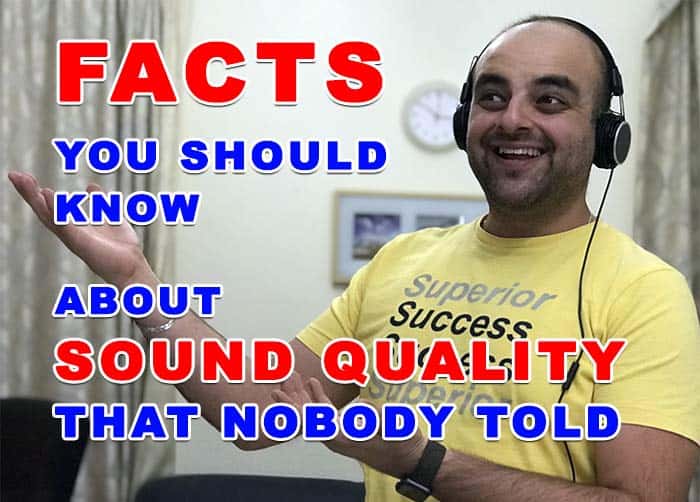
We all talk about sound quality every now and then especially when it comes to our headphones, normally we care about how good quality headphones produce very high-quality sounds but still most people do not realize how to gauge or judge how good sound quality is.
Table of Contents
- What Is Sound Quality?
- How Can We Measure Sound Quality?
- Should We Judge The Sound Quality Only Subjectively?
- What Are The Sound Characteristics?
- What Is A Sound Frequency (Audio Frequency) Means?
- What Is A Frequency Response?
- What Is The Best Frequency Response For Headphones?
- What Sound Frequency Could A Human Detect?
- What Is The Best Sound Quality File Format?
- Headphones Or Earbuds For Better Sound Quality?
- Wired Or Wireless Headphones For Better Sound Quality?
- Does Headphone Impedance Affect Sound Quality?
- What About Media Devices Impedance? Does It Really Matter?
- What Factors Impact Sound Quality?
- Conclusion
What Is Sound Quality?
Sound quality is a combination of enjoyability, accuracy, loudness, and intelligibility of a sound that comes out from an electronic media device such as smartphones, portable media players, TVs, DVD players.. etc that can be Objectively and Subjectively measured either by humans or based on electric measuring tools.
There are plenty of facts and perspectives that we should consider when we talk about sound quality, we should look at it from different angles because there is no one sentence that describes the exact meaning of sound quality, and that’s why based on my experience and research I’ve created this article for you about sound quality facts you should know that nobody told you before.
Having that being said, there are plenty of people out there assuming that good sound quality is related to the loudness of the music volume being heard in the headphone, but this is not totally true. To simplify the answer, I can say that sound quality is defined by how we preserve the clarity of a sound, its mix, and mastering subjectively.
How Can We Measure Sound Quality?
Sound quality can be measured from two different perspectives:
- Subjectively: This depends on listeners’ experience to gauge and measure the sound from a media source and how they react to it either positively or negatively.
- Objectively: But for this perspective, sound quality is measured by special tools used to gauge the accuracy and clarity based on electronic solutions.
To go a bit technical, in objective measurements, the sound quality depends on different factors that electronically can be measured such as transient response, frequency response, THD and IMD distortion …etc. Such factors are related to sound quality but taking the measurement results in this way is very similar to measuring a car driving experience by objectively measuring the horsepower, speed, oil levels, petrol levels .. etc, so as you can see, objective measurements won’t provide accurate results for us as humans since the results are coming from an electronic device perspective.
Should We Judge The Sound Quality Only Subjectively?
Yes as a generic answer, because we consumers don’t care how the manufacturers gauge the sound quality of their products i.e. headphones from the perspective of machines, we should look to it from our own perspective only by how we preserve the sound listening experience.
Linking that sound quality question back to headphones, measuring a headphone sound quality is relative, of course taking into consideration the headphone production quality like the branded ones mostly you can tell they have a better sound quality, but for normal or low priced headphones, you can gauge that by comparing its sound to some other branded headphones by listening to excellent music quality, played by a very high-quality media player source using corded headphone.
But since we as humans have different perspectives in general, gauging a sound quality differ from one person to another, some people judge the quality based on the audio bass, others judge it based on the clarity, and in the end, there isn’t that much right or wrong in that, as long as the user is happy and comfortably convinced about the sound quality he is getting out of his headphone or speaker.
What Are The Sound Characteristics?
Sounds are characterized by:
- Pitch: Pitch is referred to as how low or high a note is being played by an instrument or being sung, thus the pitch depends on the frequency of the sound.
- Loudness: Loudness is what we call the amplitude of a sound, and that’s why when we listen to a low amplitude music piece, we intend to increase the volume of the player to make it louder and more energetic.
- Quality: This is what I was talking about which is referred objectively to as the quality of the sound waveform from an electronic perspective and referred to subjectively as how we preserve and experience it.
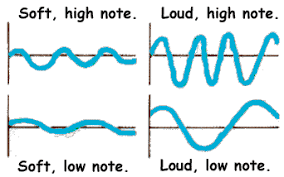
What Is A Sound Frequency (Audio Frequency) Means?
A sound frequency (technically) means a periodic vibration over time whose frequency is audible to average humans and it’s measured by Hertz (Hz), the change of the frequency waveform over time will describe what a sound pitch is.
Another characteristic that a sound frequency is depending on to produce a sound is the amplitude, which is measured by decibels (dB) and determines how loud the sound is, in a sound frequency waveform, the amplitude is measured vertically compared to the frequency waveform which is measured horizontally, the higher the dB level of amplitude the louder sound it produces.
What Is A Frequency Response?
Frequency response is a range of frequencies on the spectrum consisting of bass freq., mids freq., and treble frequencies. Those frequency elements are controlling how the sound pitch and amplitude should sound like.
What Is The Best Frequency Response For Headphones?
From a headphone’s perspective, the wider the frequency response a headphone can offer the better for that headphone. Frequency response is one of the elements that can enhance the sound quality that a headphone can produce, how? because of the audible frequency range (20 Hz – 20 kHz) as explained below:
- Headphones Evolution: Early back days when it was hard to get a headphone with a wide audible range of frequencies, but today, very basic headphones are covering the audible range (20 Hz – 20 kHz) and even wider than that.
- Bass Frequencies: Many headphones nowadays provide a wider frequency range than what we can hear as humans, some are providing ranges from (5 Hz – to 33 kHz), I know this sounds crazy because as stated above that the audible frequency range is from (20 Hz – 20 kHz) and we shouldn’t hear above or below that, but to be more accurate, headphones can deliver a sound that you can feel at low freq. (from 5 Hz – 20 Hz) more than you can hear at such very low frequencies.
- Pitch Frequencies: It is very rare that people can hear high frequencies above 20 kHz, but sounds above that value do impact the sounds we do hear as harmonics. The sound is comprised of waves that interact with each other at all frequencies.
In conclusion, a frequency response impacts the sound quality of a speaker as well as headphones, but you shouldn’t worry about that because most headphones are covered with the right frequency response.
What Sound Frequency Could A Human Detect?
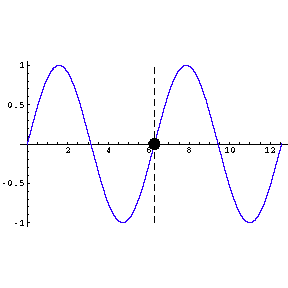
The sound frequency range a human being is able to hear is between (20 Hz – 20 kHz). Above or below this range is not audible for humans, unlike some insects or animals like dogs, cats …etc who have a wider frequency range than humans, while devices could detect any frequency range.
Most of the headphones today are made to work in a frequency range that is far than what we can detect, so the manufacturers are assuring that full human being capacity is covered in their headphone’s performance, for example in the headphone’s description you will find the frequency range is working on between 18 Hz (Lowest frequency which serves the bass) to 22 kHz (The highest frequency that serves high pitch sound notes).
What Is The Best Sound Quality File Format?
The best sound quality file format is the uncompressed format like the WAV file, there are other file formats that are near to the quality of WAV files which you cannot feel any difference, but they are compressed without a quality loss like FLAC, ALAC ..etc.
WAV files stand for (Waveform Audio File Format) has almost the best quality for people who want to enjoy high-quality music, because there are many other audio file formats that are also great in their quality and uncompressed ones but they are not popular to be used for consumers as they are not playable by smartphones, portable player .. etc but they are used in studios or production houses.

You need to know that the master digital copy of the highest quality audio file saved by the mixing studio engineer is a WAV file, which is pretty huge in its size but excellent in quality, then the musician-artist produces his audio CD album from that WAV file source.
Based on the technology demands for smaller audio file sizes over the past decades, an MP3 file format (which is the most popular) has been developed to serve the best audio quality with the smallest file size, the MP3 file format is a compressed lossy file format that has less quality but for an average consumer its a pretty decent quality audio.
In conclusion for this question, regardless of what audio file type you have in your computer or other devices, you won’t see that much difference if you are using average headphone quality with a normal PC audio card to listen to them, thus you need a professional setup to gauge the differences.
Headphones Or Earbuds For Better Sound Quality?
Both headphones and earbuds are offering excellent sound quality, although there are some differences between them in terms of how they deliver the sound to your ears and what they can offer as a technology solution, let’s break this down for better understanding:
- Noise Cancellation: Most noise-canceling earbuds tend to be less effective than noise-canceling headphones unless you get a high-priced pair. For headphones, they have also very good noise isolation, especially for low frequencies but not all headphones offer this feature, and in most cases, those types of headphones are pretty pricey. For this point, headphones win.
- Noise Isolation: This describes how well sounds are being isolated and the people around you are not being annoyed by the music you are listening to. Of course, earbuds with a good pair of silicone or foam tips have the best isolation compared to headphones. Earbuds win here.
- Low and High-Frequency Ranges: Also known as frequency pitch range, which is usually explained as the lowest sound a phone can transmit followed by the highest. At this point, earphones tend to have a smaller pitch range compared to headphones, so headphones win here (there are exceptions).
- Frequency response Curve: In other words, this could explain how much distortion an earbud or headphone produces, in general earbuds are able to produce more distortion than headphones. Headphones win here (there are exceptions).
- Bass Boost: Here comes the main advantage of headphones is that they deliver superior sound quality when it comes to capturing bass tones. Earbuds tend to deliver inferior sound quality when it comes to bass tones or bass boost. 😁 Headphones win.
- Comforts: This is where earbuds tend to suffer, the reason is related to the variation in the cavum conchæ shape (The little bowl shape outside of your ear canal) in every person, so earbuds are normally made as one product for all, thus making it in many cases irritable and uncomfortable to wear, on the other hand, headphones are a better solution for this regard because of them being over-ear headset can be used with any external ear shape or size with no issues. Definitely, headphones win.
- Wired and Wireless: In general wired headphones or earbuds produce better sound quality than what wireless ones can give, I have declared all details in the below next question. Wired headsets win.
In conclusion, both headphones and earbuds have their own pros and cons but still, they can deliver excellent sound quality, however, which one to choose depends on the circumstances and on your needs you can decide which one to go with.
Wired Or Wireless Headphones For Better Sound Quality?
Also, some people are asking “Do wireless headphones reduce sound quality?” It’s a pretty common question people are normally asking. Wired headphones are gaining benefits by using your media device amplifier and its power, simply because they are using the electrical cord connected to them, which is practically and logically better than the small amp inside of a pair of wireless headphones.
As a general answer, I could say based on my research that wired headphones tend to provide a better sound quality experience compared to wireless ones, how is that? because wireless headphones are basically using Bluetooth technology which is based on AAC file format, as well as many wireless headphones are based on the SBC codec.
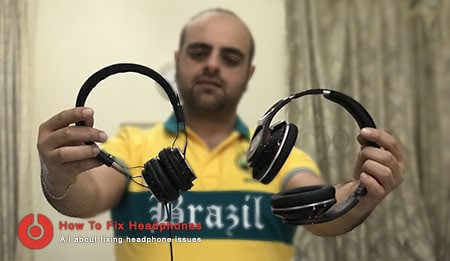
So a wireless headphone’s sound quality depends on two stages to deliver the sound from your media player to your ear, the first stage is where your player uses different types of audio files that are based on different codecs and formats while playing a file from your player’s list, the music sound will be compressed in order to be sent over Bluetooth technology to your headphone’s set.
On the other side, when your headphone receives that compressed signal from your media player, it will decompress the signal back to a music piece that could be transferred to the speaker to play it out. During this process, the sound quality will be less than the original audio file on your media player. Comparing this process to wired headphones it is simply using the media player amp to deliver the sound with no compression via a voltage signal.
What path does a sound take to reach your wireless headphone?
Media Player > AMP > Coder (Digital To Analog converter) lossy > …. Bluetooth Medium …. > Wireless Headphone > Wireless receiver > Decoder (Analog To Digital Converter) lossy > Your Ear
What path does a sound take to reach your wired headphone?
Media Player > AMP > Wired Headphone > Your Ear
Because of the importance of this topic to many people out there and since most of them prefer to use wireless headphones as a new technology that makes their life better, I want to proceed further into this and give you more details so you won’t be disappointed in the comparison I described above between wired and wireless headphones.
In addition to WAV files, CD-quality audio tends to have the best quality, and mentioning AAC for the wireless headphones above was based on many users are listening to iTunes music (which is AAC based), and since the fact that AAC is not as good as a CD-quality makes things worse for those who love the listening experience using a wireless headphone.
But here is the thing, Bluetooth technology is still and will always be evolving, there will always be an enhancement in the wireless technologies just as happened in the past when they created different file formats and different codecs for different purposes, and the same is happening with the wireless or Bluetooth technology, and definitely, we will not see this over days but within a long time.
In conclusion, If you are using your smartphone or media player to play music to your wireless headphones you won’t see that much difference in quality compared to connecting a wired headphone with a dedicated DAC (amp), but if you are an audio quality geek, then better to go with a decent quality wired headphone with a good media portable player, playing high-quality music files will make your day.
Does Headphone Impedance Affect Sound Quality?
Yes, headphone impedance is directly related to sound quality, but before I can proceed further to say how we need to understand first what headphone impedance means.
All electrical devices have three basic elements that without them being together there wouldn’t be something called an electrical circuit, thus no complete definition of electronics, those elements are Volt, Current, and Impedance (measured by ohms Ω). So, since headphones, smartphones, media players ..etc are all electronic devices so they are based to function on those three elements including the impedance.
Now I don’t want to go further in technical stuff as I am not intending to make a tech blog, so as long as impedance is one of the factors that any media device or headphone is based on to function, alternatively, a headphone’s performance also based on its electrical circuit impedance by default.
So how does headphone impedance affect its sound quality?
There are two types of headphones, High-impedance, and low-impedance ones, low impedance ranged from (5 Ω to 32 Ω ohms), and from 32 Ω ohms and above should be the wide range for the high-impedance headphones, below are the differences and how they impact the sound quality:
High-impedance headphones: Offer more dynamic levels of sound quality and add new dimensions to the music you are listening to, making sounds smoother and enhanced, plus they offer a better bass definition.
Low-impedance headphones: Offer less dynamic levels of sound quality, hence can get either too tinny or bassy with Higher distortion levels, especially at high volume levels.
As well as with high-impedance headphones you can expect more balanced, clean, and less distorted sounds, especially at louder levels compared to the low-impedance headphones.
What About Media Devices Impedance? Does It Really Matter?
Do you think only headphone impedance is what we should be concerned about? No, it’s not the only parameter determining the listening experience, we should be concerned about the other end where the media players and smartphones are.
Both headphones and portable devices’ output impedance need to have a certain type of numerical relationship to one another to provide the best sound quality both.
What Factors Impact Sound Quality?
We can talk a lot about this subject because it has different directions and perspectives in order to give you a wider overview of sound quality and what factors that might either impact it negatively or positively, but let me brief you with some points just to increase your awareness while you’re still here at this facts article.
And I am not gonna talk about side way information like big room will affect the sound quality or distance between the sound source and our ears, I am gonna go deep further into information you might not have even thought about.
Mobile Voice Call Sound Quality
Being a Telecommunications engineer for many years in my career in different fields, I am giving you this tip for free 😀 which you might not hear commonly but it will enlighten you for sure.
It is really complicated how mobile phones are communicating with each other, it’s not as simple as you think like they are communicating directly, no this is not correct even if the one you are calling is sitting just right beside you. In reality, (I am being so brief here) any two mobile phones are communicating with each other via a mobile switch through a long-distance network of different technologies used and solutions such as but not limited to GSM towers, fiber cables, microwave links, BTS, MTS, MSC … etc back and forth.
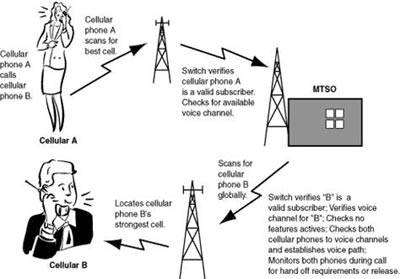
So, in order to make things work, mobile smartphones are using two different technologies to make a call starting from the signaling process to check the caller and the called mobile locations and accordingly using signaling to make a connection between them, then the telephone rings, once the called party answers the call, an Audio Voice Channel is established between the two parties and the call has begun.
Starting from the Voice Audio Channel establishment (where my point is), the communication between your mobile and the other party through all that long way is based on the mobile system technologies, which requires reducing the voice quality in order to reduce the delay time, as well as reducing the bandwidth capacity of the network to handle more calls at the same time at the optimal quality (this also has different approach technically), this will reduce the cost for the telecommunications company service provider and increase their revenue from your subscriptions and data payments.. etc.
Now, how the voice quality will be reduced? it is basically cutting off frequency ranges from the sound waveform (like we talked about previously about “low-frequency and high-frequency”) and narrowing it only to human voice frequencies, but this also reduces the overall sound quality of a normal voice conversation.
In a conclusion, mobile smartphones will definitely impact the sound quality negatively even though you use your headphones while using them, and it’s not a good medium to play music for someone over a voice call conversation to show him or them how good music quality that piece because he will hear the poorest quality version of it.
Voice Over IP (VoIP) Sound Quality

VoIP Stands for Voice Over Internet Protocol, and in general, and is the method used for voice communications on the internet. The VoIP technology offers way better quality than the old POTS telephony services back in the old days, and as a matter of fact, this new technology was invented early in the seventies, and the first VoIP voice call test was accomplished in 1974, while the service was adopted around a decade ago for the public.
Some telecommunications companies are using VoIP technology in their international mobile or landline phone calls as a backbone service, and because VoIP is an internet-based service, they intend (as far as I know) to compress the outgoing and incoming international voice calls to make them less in streaming size thus to reduce the pressure on their service bandwidth (to increase the number of calls at the same time) and also to reduce their costs.
So imagine how many stages of reducing the sound quality will be processed to connect the international mobile phone calls based on telecommunication companies that are using VoIP for international phone calls.
That’s why they have good offers for you for international call prices because for them it costs nothing since it’s internet-based. And also that’s why making international mobile calls or landline calls sounds so crappy to older ages.
Ok, as an extra point, how could you tell whether you are currently using VoIP services and not being aware of that? I will tell you below in any case of them, means you are using it:
- If you are using an FTTH (Fiber To The Home) internet service from your ISP (Internet Service Provider) and that internet package is integrated with landline telephony services.
- If your telephone service is from a cable provider like Spectrum, Cox ..etc, then most probably you are using it.
- Nowadays, most telephony services companies are using VoIP technology at their back-end.
In a conclusion, VoIP adds value to the sound quality and provides a higher range of frequencies digitally unlike the old times when it was used in an analog manner with poor sound quality.
Digital Vs Analog Audio Quality
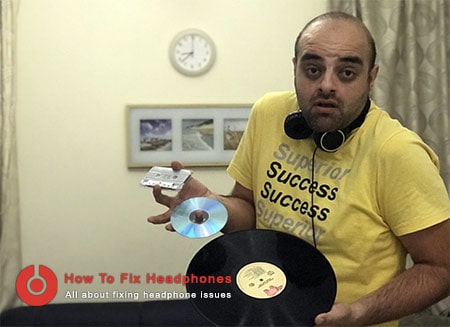
There are tons of technical information which I don’t want to waste your time with when it comes to digital and analog audio, generally speaking, you cannot answer directly which one wins, but to look into this debate we should think of it from two different aspects so the image will be clear for you to decide.
So let’s give brief facts and details about both analog and digital as below:
Analog Audio
- Analog Audio Source Examples: Vinyl records turntable, Tape cassette, VHS cassette, Radio, Audio from local TV & Antenna… etc
- Headphones compatibility: Yes.
- Noise & Variations: Over time analog audio sources will have speed variation, frequency variation, Distortions ..etc
- Sound Quality Overtime: Changes.
- Loss Of Sound Quality: Changes, analog audio can lose its audible value when being played or copied.
- Time Negative Impact On Quality: When time passes analog will lose the sound quality for several reasons such as environmental, medium materials made of, usage, the lifetime of the medium …etc.
Digital Audio
- Digital Audio Source Examples: Audio CDs, Portable MP3 players, Computers & Tablets, smartphones, Digital Tv & Radio via Sattelite, DVD and VCD players … etc
- Headphones compatibility: Yes.
- Noise & Variations: None, instead digital sources are steady, fixed frequency..etc
- Sound Quality Overtime: No change.
- Loss Of Sound Quality: No change, digital audio can be played and copied endlessly without ever losing its original quality.
- Time Negative Impact On Quality: No sound quality loss over time, but the environment might affect the lifetime of the medium at a very lower impact.
Is it clear for you now to judge? nope, you better read further for more clarifications as this is not the end of the story for analog vs digital audio, at this point, you won’t be able to decide which one is better for sound quality.
All source of digital audio is basically analog! yes this is true when a guitar player records his music to a digital mixer he is basically converting the analog playing audio sound from analog (live guitar sound) to digital (mixer input), and this is similar to converting an old vinyl turntable music into digital but this one might have some distortion due to the usage of the vinyl record and how clean is it.
Nevertheless, many audio music records are being converted back from digital to analog and the reason why because analog frequencies are much wider and variable compared to the digital fixed frequencies, having a variable frequency will give a more realistic and warm sound, unlike the digital might feel little crispy cold clean uninviting quality.
But also we should not forget that Cassette tapes change their frequencies over time, hence they push the pitch up a little bit due to the chemical variation over time of the tape itself, that’s why old cassettes will make the singer’s voice thinner than what it was at the first time you listen to it several years ago. Vinyl records have a different issue, they add distortion over time because of their physical scratches but at the same time, they provide a wider range of frequencies and provide a more warm sound quality that is closer to the real original sounds.
So in conclusion, no one can claim or prove that vinyl has better sound quality than Cds for example, because it’s all about how you look at it from which perspective and flavor, hence I have told you, in general, the differences so you can be guided how to look in a new perspective towards both of them the analog and the digital sound qualities.
Analog Radio Stations Audio Broadcast Quality
Like FM and AM broadcasting that we listen to almost every day during our drive trips, or at our private offices, FM stands for Frequency Modulation and AM stands for Amplitude Modulation, technical-wise, using different technical methods to be broadcasted and delivered to the listeners, but at the end, they both have a similar or close sound quality.
The difference between FM and AM is that FM broadcasting covers a small amount of area ranging between 30 to 40 miles (50 to 65 Km) and gets blocked by distractions along the way like hills, mountains, undergrounds.. etc, while AM broadcasting covers a very wider area due to its method of technology it is based on, it’s lower frequency can travel as ground waves or reflect off the ionosphere.
For the sound quality of Radio Station broadcast, you can sense that yourself, while listening to music via radio station you can compare it to a CD audio quality you will find a huge difference because of the attenuation the signal is being through till it reaches your audio receiver.
The audio frequency signal is affected by several factors like attenuation by electrical network signals everywhere, electrical motors, or any electrical device, other radio stations might use close frequencies or the same in some cases, high power tension posts on the way… etc.
The sound quality of a radio station broadcast will not have only attenuation issues along the way, but also from the beginning the radio station broadcasting a limited sound quality with a certain range of frequencies, and being an analog frequency signaling, this will add a point to the cons list, because the analog signal wave will have to be encoded and compressed before it travels outside the radio station, then it will be decoded again and decompressed to reveal the sound at your receiver and this will impact the sound quality again negatively with loss.
In a conclusion, still, in our era with all the digital technologies, we haven’t yet reached a time that we can replace normal radio stations with digital ones, at the time we already have this technology via the internet live radio broadcasting, and satellite radio broadcasting which is a digital solution that offers very good quality in sound with no analog issues and limitations.
Conclusion
Who doesn’t like to listen to high-quality music sounds? either from a radio station or a CD or even an old vinyl record? we are all having this thought and always looking for the best sound quality when we are buying new headphones, or mp3 player ..etc, despite all of that, we still have many options to enjoy our favorite music regardless of some small (unnoticeable sometimes) differences in quality between devices or technologies or even the type of the audio file or its format.
Share this article below if you believe people need to know about it … 🙂

